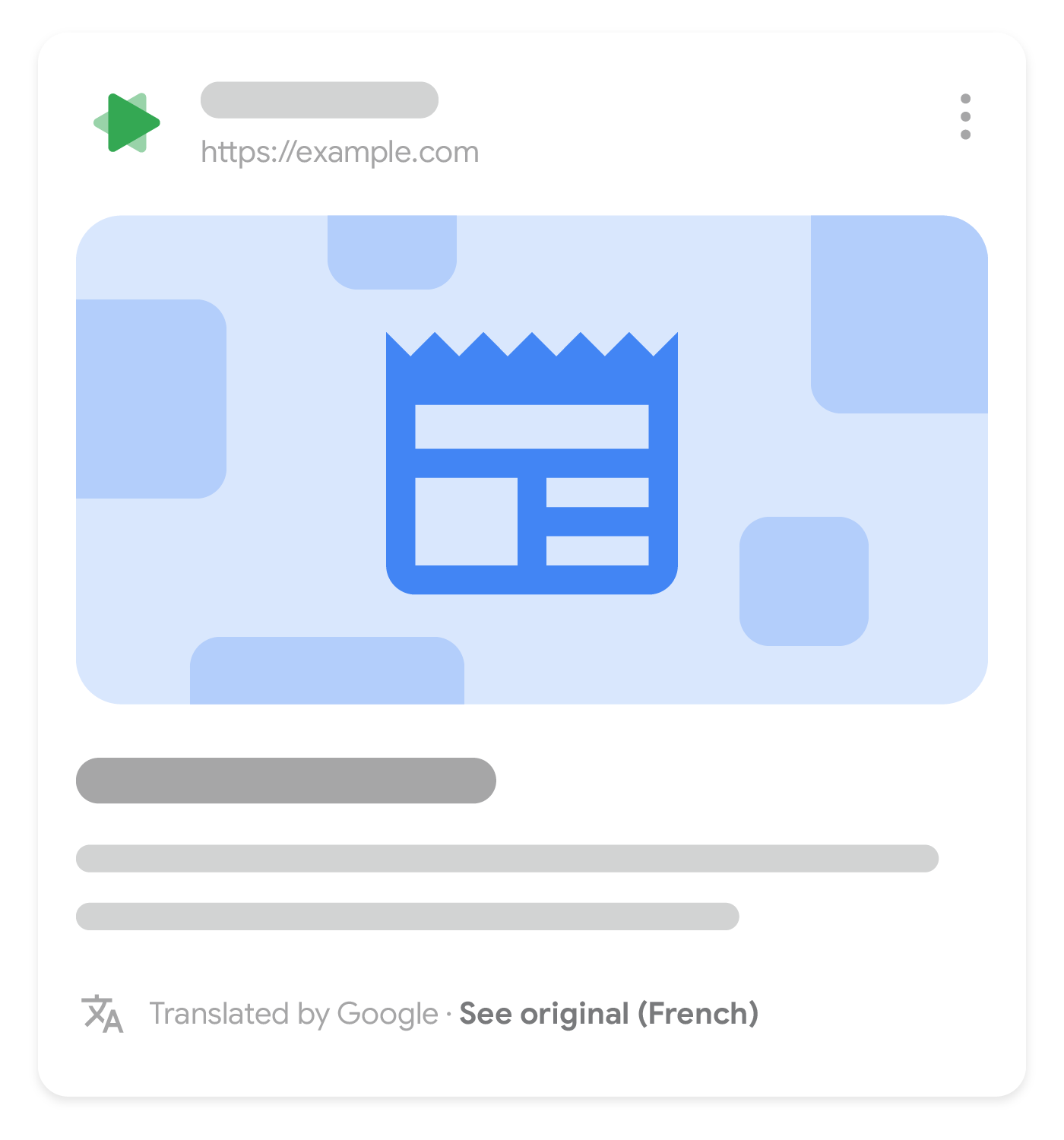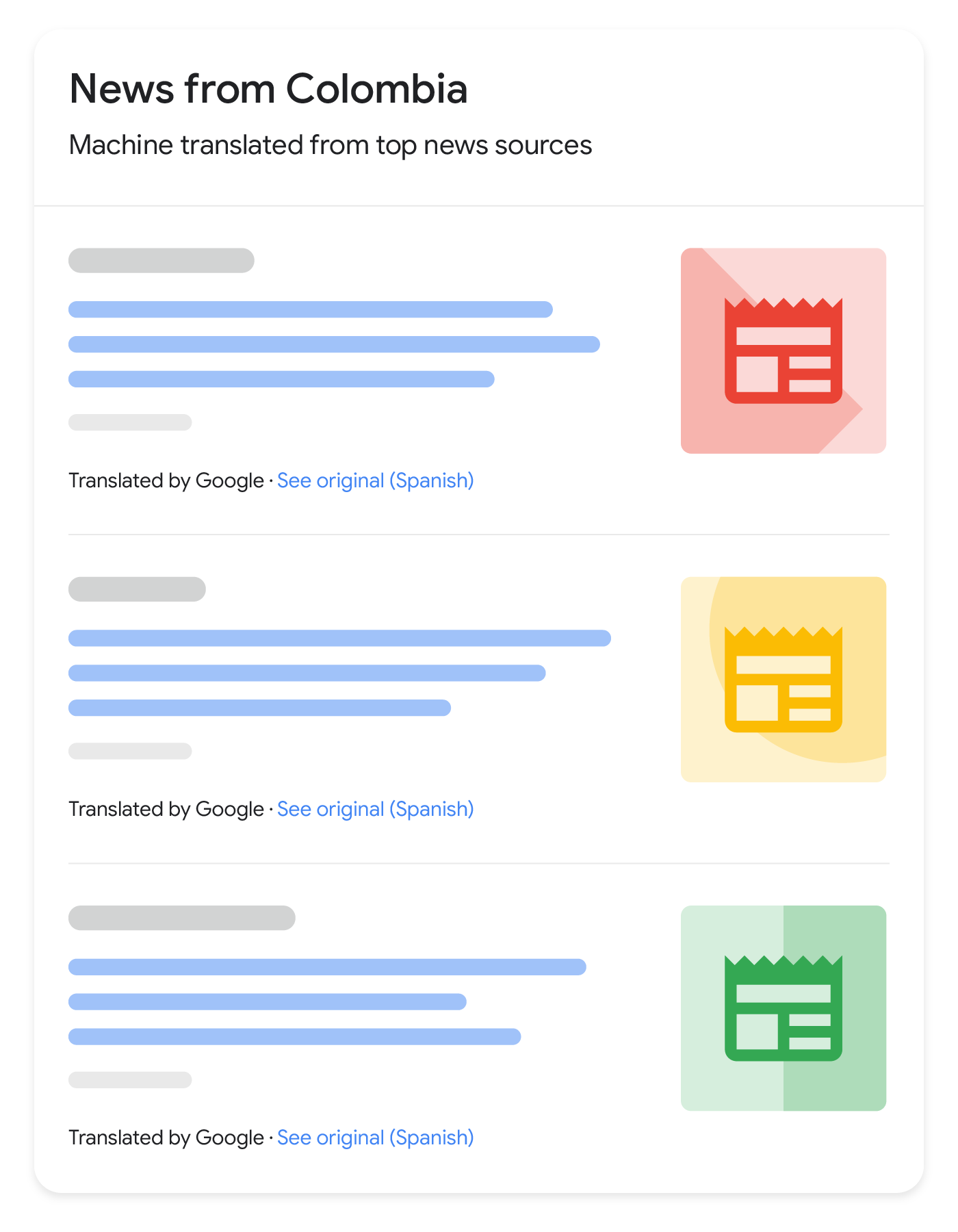翻訳された Google 検索結果
Google 検索では、情報があらゆるユーザーにとってアクセス可能で有用なものになるよう努めています。ユーザーが現地の言語で検索するときのコンテンツや全体像のギャップを減らすために、Google では、検索クエリの言語にない検索結果に対してタイトルリンクとスニペットを翻訳する場合があります。これによりユーザーが自分の言語で他の言語の検索結果を確認できるようになるため、パブリッシャーは、より多くのユーザーにリーチできます。


機能の提供状況
現在、Google では検索結果を以下の言語に翻訳できます: アラビア語、ベンガル語、英語、フランス語、ドイツ語、グジャラート語、ヒンディー語、インドネシア語、カンナダ語、韓国語、マラヤーラム語、マラーティー語、ペルシャ語、ポルトガル語、スペイン語、タミル語、テルグ語、タイ語、トルコ語、ウルドゥー語、ベトナム語。この機能は、モバイル デバイスとパソコンでご利用いただけます。
検索結果を翻訳する仕組み
ユーザーが翻訳されたタイトルリンクをクリックすると、機械翻訳されたページが表示されます。元の検索結果を表示したり、元の言語でページにアクセスしたりすることも可能です。
Google は、翻訳されたページをホストしません。翻訳された結果からページを開くことは、元の検索結果をGoogle 翻訳で開いたり、Chrome のウェブページ翻訳を使用したりするのと同じです。つまり、埋め込み画像や他のページ機能に加え、ページ内の JavaScript も通常どおりサポートされます。
Search Console でパフォーマンスをモニタリングする
翻訳された結果のクリックとインプレッションをモニタリングするには、パフォーマンス レポートで [検索での見え方] フィルタを使用します。
検索結果の翻訳の有効 / 無効を切り替える
この機能は、ユーザーの言語に基づいて、すべてのページと検索結果に適用できます。有効にするために必要な設定はありません。
検索結果の翻訳は、Google 検索の他の翻訳関連の機能と同じです。Google 検索のすべての翻訳機能を無効にするには、meta タグまたは HTTP ヘッダーとして実装できる notranslate ルールを使用します。
<!-- opt out of translation features on all search engines that support this rule --> <meta name="robots" content="notranslate">
<!-- opt out of translation features on Google --> <meta name="googlebot" content="notranslate">
または、HTTP レスポンス ヘッダーとしてルールを指定することもできます。
HTTP/1.1 200 OK Date: Tue, 25 May 2010 21:42:43 GMT (...) X-Robots-Tag: notranslate (...)
